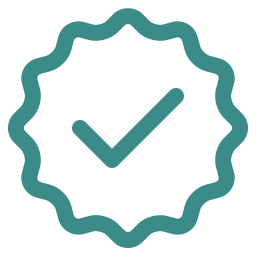Sculpt and Define: Unlocking Your Body's Potential with Pilates for Toning and Shaping a Strong, Balanced Physique
Have you ever looked in the mirror and wished to tone and shape your body?
Well, I have some good news for you.
Pilates is an excellent way to achieve a toned and sculpted physique while improving your overall health and fitness.
Whether you're a beginner or an experienced practitioner, Pilates can help you reach your goals.
As Joseph Pilates said, 'Physical fitness is the first requisite of happiness' And that's exactly what Pilates offers - not just physical benefits but also mental and emotional well-being.
In this article, we will explore the benefits of regular Pilates practice, understand core strength and proper posture, enhance flexibility with specific exercises, learn about different equipment and accessories used in Pilates sessions, go over common exercises that can help tone and shape your body efficiently, as well as how to adapt Pilates for physical limitations.
So let's get started on our journey towards a healthier self!
The Benefits of Regular Pilates Practice
Engaging in regular Pilates practice can provide numerous benefits for individuals seeking to tone and shape their bodies especially when using a Pilates Reformer with Tower.
Pilates is a low-impact exercise that targets specific muscle groups, helping to build long, lean muscles.
This type of exercise is great for individuals who want to enhance their muscle definition and improve their overall body composition.
Moreover, the movements involved when exercising Pilates on a Merrithew Reformer require a lot of focus and control, which helps improve balance and coordination.
This makes it an excellent form of exercise for those who are looking to tone their bodies while also improving their mind-body connection.
In addition, because Pilates focuses on strengthening the core, it can help alleviate back pain and improve posture.
Overall, incorporating Pilates into your fitness routine can help you achieve a toned body by building lean muscle mass and improving your overall strength and coordination.
Understanding core strength is essential to get the most out of your Pilates practice as it helps you engage the right muscles during each movement.
By developing strong core muscles through regular Pilates practice, you'll be able to perform more advanced exercises and continue seeing results over time.
Understanding Core Strength
Just like a sturdy building needs a strong foundation, having a solid core is essential for overall physical stability and balance.
The core muscles are located in the abdomen, lower back, and hips, and they work together to provide support for the spine and pelvis.
When these muscles are weak or imbalanced, it can lead to poor posture, back pain, and other health issues.
Pilates is an excellent way to strengthen your core muscles and improve your overall physical fitness.
By practicing Pilates regularly, you can tone your body, increase flexibility, and reduce the risk of injury during other activities.
Unlike traditional strength training exercises that focus on isolated muscle groups, Pilates movements engage multiple muscle groups at once for a Full-body workout.
So does Pilates tone your body? Absolutely!
Practicing Pilates exercises, especially on a Megaformer Machine can target all the major muscle groups while emphasizing proper alignment and controlled movement.
Over time, this can lead to a fit toned female body with increased muscular endurance and improved overall fitness. In addition to its physical benefits, Pilates also promotes mental clarity and relaxation through focused breathing techniques.
With a strong core as our foundation from regular Pilates practice, we now move on to the importance of proper posture.
Proper posture not only improves our physical appearance, but also helps prevent injuries, reduces strain on our muscles and joints, and improves our breathing and digestion.
It can also boost our confidence and mood, as we feel more self-assured and less fatigued throughout the day.
By maintaining good posture, we can also improve our balance and coordination, which can translate to better athletic performance and reduced risk of falls and accidents.
Overall, proper posture is a crucial component of a healthy and active lifestyle, and it starts with a strong core foundation through Pilates.
The Importance of Proper Posture
Improving your posture can have a significant impact on your overall health and well-being, allowing you to move with more confidence and ease through your daily activities.
In Pilates, proper posture is essential for achieving maximum results in toning and shaping the body.
Pilates exercises using BASI Systems Pilates Cadillac require a neutral spine position, which means maintaining the natural curves of the spine without slouching or arching excessively.
Having good posture during Pilates exercises also helps to engage the correct muscles and prevent injury.
For example, when performing a plank exercise on a BASI Systems Wunda Chair, proper alignment of the shoulders, hips, and ankles is crucial for activating the core muscles effectively.
When these muscles are engaged properly, they will tone and strengthen over time.
Correct posture not only enhances your physical appearance but also contributes to better breathing patterns that help alleviate stress.
Incorporating Pilates into your fitness routine can help improve your overall posture by strengthening weak muscles and stretching tight ones.
Enhancing flexibility with Pilates is another key component in achieving optimal posture and body tone.
By focusing on controlled movements with proper alignment, you can increase joint mobility while reducing muscle tension.
Stretching tight areas like the chest, hip flexors, and hamstrings helps restore balance to the body as well as improve the range of motion.
Enhancing flexibility is an important step towards achieving toned muscles through Pilates exercises.
With good posture as a foundation for all movements in this discipline, engaging in regular practice can yield positive results both physically and mentally.
So let's dive into some effective ways we can enhance our flexibility with Pilates!
Enhancing Flexibility with Pilates
To increase your flexibility and achieve maximum results in your Pilates practice, there are various techniques that can be incorporated into your routine.
At its core, Pilates emphasizes controlled movements and proper alignment, which help to stretch and lengthen the muscles.
By focusing on these principles, you can improve your range of motion and increase overall flexibility.
One technique that can be particularly effective for enhancing flexibility is dynamic stretching on M3 Megaformer.
This involves moving through a series of stretches with fluid, continuous motions rather than holding static positions.
Dynamic stretching helps to warm up the body while also preparing the muscles for more challenging exercises later in the session.
Another way to enhance flexibility is by incorporating props such as resistance bands or yoga blocks into your Pilates routine.
These tools can provide added support or resistance during certain exercises, allowing you to deepen stretches and target specific muscle groups.
With consistent practice using these techniques and tools, you'll be well on your way towards achieving a toned body with Pilates.
To further enhance your Pilates experience, consider investing in some equipment or accessories.
From Reformer for Sale to foam rollers to specialized socks designed for better grip during exercises, there are many options available to take your workout to the next level.
Pilates Equipment and Accessories
Pilates practitioners can pump up their practice by procuring premium Pilates props and paraphernalia.
Here are three must-have Pilates equipment and accessories that will help you tone and shape your body like never before:
-
Pilates Magic Circle
This small, circular ring is designed to provide resistance during Pilates exercises, making them more challenging and effective.
It's particularly useful for targeting the inner thighs, a notoriously difficult area to tone. Incorporating the magic circle into your routine will help you achieve a more sculpted lower body.
-
Resistance Bands
These bands come in different levels of resistance and can be used to add intensity to various Pilates exercises such as squats, lunges, and leg lifts.
They also allow for a greater range of motion which helps improve flexibility while toning your muscles.
-
Foam Roller
A foam roller is an excellent tool for self-myofascial release (SMR), a technique that helps alleviate muscle soreness and tightness by applying pressure to specific areas of the body.
SMR has been shown to improve mobility, increase circulation, and enhance overall performance during workouts.
Incorporating these three pieces of equipment into your Pilates routine can take your practice to the next level in terms of toning your body effectively.
Now that we've covered some essential equipment, let's move on to common Pilates exercises that will further aid in toning up all parts of your body.
Common Pilates Exercises
Let's explore some of the most popular Pilates moves that'll help you achieve a stronger and more flexible physique.
Pilates is an excellent way to tone your body, as it focuses on building strength in specific muscle groups.
One of the best exercises for toning your inner thighs is the Pilates clamshell.
To perform this move, lie on your side with your knees bent and feet together. Then, lift your top knee while keeping your feet touching and lower back down.
Another great Pilates exercise for toning is the roll-up.
This move targets your core muscles, including the abs and lower back. Start by lying flat on your back with arms extended above your head.
Slowly roll up one vertebra at a time until you reach a seated position with arms reaching towards toes, then slowly roll down.
So, does Pilates tone your body? Absolutely!
With consistent practice of these common exercises and others like them, you'll build strength, flexibility, and endurance throughout your entire body.
In our next section, we'll discuss how to adapt Pilates for physical limitations so that everyone can benefit from this amazing workout method.
Adapting Pilates for Physical Limitations
If you have physical limitations, don't worry! Pilates can still be a great workout option for you.
Here are three ways to adapt Pilates exercises to your needs:
-
Modify the exercises
Many Pilates exercises can be modified to accommodate various physical limitations.
For example, if you have knee pain, you can do the leg circles exercise with a bent knee instead of a straight leg.
If you have back pain, you can modify the roll-up exercise by bending your knees and placing your feet on the floor.
-
Use props
Props such as blocks, straps, and balls can help support your body during difficult exercises or provide additional resistance when needed.
For example, using a block between your thighs during inner thigh lifts will make it easier to engage those muscles without putting extra strain on your knees.
-
Consult with a professional
If you're unsure about how to adapt certain exercises or which ones are best for your specific needs, consider consulting with a certified Pilates instructor or physical therapist who can guide you through modifications and recommend appropriate exercises.
While Pilates is known for its ability to tone and shape the body, it's important to remember that it may not necessarily build muscle in the same way that weightlifting does.
However, by focusing on proper form and engaging multiple muscle groups at once, Pilates can help increase overall strength and flexibility while improving posture and balance.
So even if you have physical limitations, don't let that discourage you from giving Pilates a try with some modifications and guidance from professionals, it could be just what your body needs!
Frequently Asked Questions
How often should I practice Pilates to see results?
Consistency is key when it comes to seeing results from Pilates.
We recommend practicing Pilates at least 2-3 times a week to see noticeable improvements in your body tone and shape.
However, keep in mind that everyone's body is different, and some may see results faster or slower than others.
It's important to listen to your body and not push yourself too hard, as overexertion can lead to injury or burnout.
By committing to a regular Pilates practice and incorporating healthy habits into your lifestyle, you'll be well on your way to achieving the toned and sculpted physique you desire.
Remember: slow and steady wins the race!
Can Pilates help me lose weight?
Yes, Pilates can help you lose weight. Pilates is a form of exercise that focuses on strengthening and toning muscles while also improving flexibility, balance, and posture.
By engaging in regular Pilates workouts, you can burn calories and increase muscle mass, which can lead to weight loss over time.
However, it's important to keep in mind that diet also plays a crucial role in weight loss.
To see the best results from Pilates for weight loss, it's important to combine it with a healthy diet and other forms of exercise as part of an overall fitness plan.
Is Pilates suitable for pregnant women?
Pilates is a safe and effective exercise option for pregnant women, provided they're given clearance by their doctor.
It can help expectant mothers build strength and flexibility, improve posture, and reduce stress.
Pilates exercises that focus on the pelvic floor muscles may also be particularly beneficial during pregnancy and postpartum.
However, it's important to work with a qualified instructor who has experience working with pregnant clients and can modify exercises as needed to ensure safety and comfort.
As always, consult with your healthcare provider before starting any new exercise program while pregnant.
What should I wear during a Pilates class?
During a Pilates class, it's important to wear comfortable clothing that allows for ease of movement.
Choose clothing that is breathable and stretchy, such as leggings or yoga pants paired with a fitted top.
Avoid loose or baggy clothing that may get in the way during exercises.
It's also recommended to wear socks with a grip on the bottom to prevent slipping on the mat.
Some Pilates studios may provide equipment such as mats and props, but it's always a good idea to bring your own water bottle and towel for comfort and hydration during the class.
By wearing appropriate attire, you can fully focus on your body movements and get the most out of your Pilates workout.
How does Pilates differ from traditional exercise methods?
Pilates is a unique exercise method that differs from traditional workouts in several ways. Firstly, it focuses on building strength and flexibility through controlled movements rather than repetitive exercises.
Secondly, it emphasizes the mind-body connection, with an emphasis on breathing techniques to center the mind and improve focus during exercise.
Finally, Pilates works to balance the body by targeting specific muscle groups that may be over or underused, leading to better posture and alignment.
Overall, Pilates provides a low-impact workout that can help tone and shape your body while also improving overall physical and mental well-being.
Conclusion
In conclusion, incorporating Pilates into your fitness routine can be a game-changer.
It helps increase core strength, improves posture, and enhances flexibility.
Not to mention the added benefits of stress relief, increased energy levels, and overall mental clarity.
It may seem intimidating at first, but with practice and patience, you can master common Pilates exercises and even adapt them to physical limitations.
Don't forget to invest in proper equipment and accessories to maximize your results. So why not give it a try?
You never know how much of an impact it could have on toning and shaping your body until you try it out yourself!




